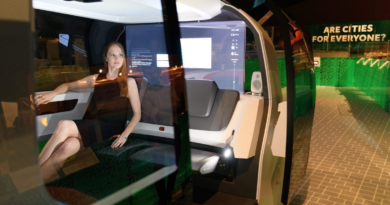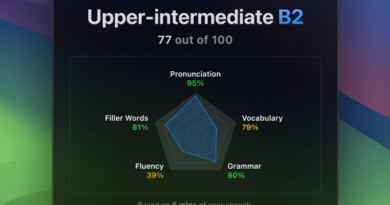For Roblox avatars, it’s something old and something new
Roblox has been around for a long time. The online game platform first launched in 2006 — just two years after vanilla World of Warcraft hit (the first time) and three years after Second Life, a now-ancient vision of the interconnected, avatar-based digital worlds around which Mark Zuckerberg would go on to rebrand Facebook.
We might not be saying “metaverse” as much in 2023 (thanks Meta) but companies building elaborate online game worlds have continued apace. In Roblox’s case, that’s meant layering in new technology while updating systems that were created well before you could buy a VR headset at Target for something-ninety-nine.
Like many long-running software systems and live service games, Roblox’s infrastructure has been updated and tinkered with at many junctures along the way. Some of that infrastructure is old and necessitated being rebuilt outright, while other improvements can be draped on top. All the while, the system needs to stay live and lumber on.
TechCrunch spoke to Roblox CTO Daniel Sturman about the challenges of future-proofing a game platform that’s approaching two decades old while still meeting the needs of a community that enjoys the old-school aspects of the product.
“It is so important at Roblox; we always talk about respecting the community and putting the community first,” Sturman said. “That’s why we very rarely break APIs and we only do it after we’ve really worked on a migration effort of any sort. It’s so important to us not to impose work on our creators unnecessarily — they’re our lifeblood.”
On Roblox, old and new coexist. It’s an interesting manifestation of the company’s ethos, and one reflected in the decisions Roblox makes with its underlying technology. The company’s latest challenge is merging old and new when it comes to the avatars at the heart of its many game worlds. In the last few years, Roblox has introduced much more modern-looking avatars with normal proportions, but its iconic blocky character figures are still alive and well.
To modernize its avatars, Roblox had to craft a new tech stack known as R15, because the newer avatars have 15 body parts compared to the old R6 models, which only have six. According to the company, keeping the two avatar tech stacks running has created “frustrations” among the developers who craft its user-generated experiences. Now, Roblox is rolling out more tools to help devs convert old R6-based experiences to the more modern system that allows for twice as many moving parts.
“We have this real dilemma, we have experiences that have run for years on Roblox with almost no user intervention,” Sturman said. “We’re not like some platforms [where] we can say, ‘okay, we’re deprecating the old one and you all need to change all your code and update on the following date, or you’re out of luck.’
“We had to build a system that allowed all the systems that were built expecting R6 avatars… to work and get all the benefits of R15,” Sturman said. “So what we wanted to do was kind of an under the cover switch, almost like Indiana Jones when he swaps the idol for the bag of sand.”
Roblox is bringing avatars old and new together under one banner, but it’s totally possible to keep the blocky, classic style with an R15 avatar. The older-style avatars can still look lo-fi and blocky, but they’ll actually be more sophisticated under the hood, with a hand, an upper arm and a lower arm where there was once just a paddle.
“Our user base is broadening pretty aggressively… so for people where the experience was just awesome with the traditional avatars, you know, ‘if it ain’t broke, don’t fix it,’ is kind of a philosophy on that,” Sturman said. “It really was compelling and we have a lot of creators and users on the platform who love that traditional Roblox look that we’ve had in the past.”
Image Credits: Roblox
Roblox has been steadily working to make its avatars more realistic, enhancing them with features that are far from commonplace now, but could be ubiquitous in the future. Last month, Roblox announced its plan to introduce a new video calling product called Roblox Connect, allowing two users to voice chat via their avatars while hanging out in a virtual environment.
Part Zoom and part Memoji, the voice-based calls leverage Roblox’s existing investments in facial motion tracking for a more present, immersive experience. In the announcement for Roblox Connect, which will launch later this year, the company wrote that “a person’s avatar will mirror their exact facial expressions, right down to the same blink rate” in the near future.
Roblox has been investing in visual fidelity, across the board. A platform once, and arguably still, known for its lo-fi look and relatively sparse virtual spaces — many polygonal suburban shopping strips among them — is moving toward a richer, more complex visual identity. Or at least opening up those possibilities for developers interested in expanding their horizons.
“We also have creators who are trying to build a different experience, trying to build an aged-up experience, sometimes now a 17+ experience,” Sturman said. “The blocky avatars aren’t necessarily best suited for that. So we really did want there to be choice. And I think it goes back to the idea that avatars are about your self expression and at the end of the day, for some folks, the blocky avatar is the self expression they want and for others, it is not. So we kind of need both.”
If Roblox is still synonymous with Lego-looking dudes with U-shaped smiles right now, the platform’s future is much more heterogeneous. Roblox will continue inviting developers to build whatever they want without constraining them into a coherent visual style, for better or worse. A company more concerned with curating a specific visual experience (Epic Games and Fortnite come to mind) might find the results too chaotic, but when Roblox imagines the kind of content it wants on the platform, it’s pretty much everything, everywhere all at once.
As Roblox continues to embrace visual chaos, the company knows that its users are aging up. To keep them engaged on a platform that outsiders (i.e. parents, people above drinking age) often find strange and inscrutable, Roblox is keen to open pathways to more mature experiences without messing too much with the formula that got it here, quirks and all.
For Roblox, that means developers can use its tools to build high-fidelity experiences that look like AAA games or incorporate thematic content appropriate for 17+ users (romance and a touch more violence!). Or they can just keep making the blocky, digitally rustic experiences that charmed users to begin with.
When asked if he thinks the blocky, classic Roblox avatar could ever become so vestigial in the future that it vanishes altogether, Sturman didn’t hesitate.
“What you’ll just see… [is] all sorts of avatars and maybe some of the blocky ones. But if you were new to Roblox you would never identify any avatars as the ‘system avatar’ — that’s the world I expect to see.”




